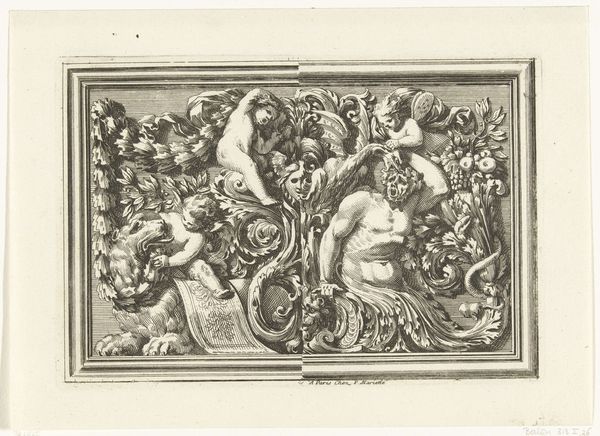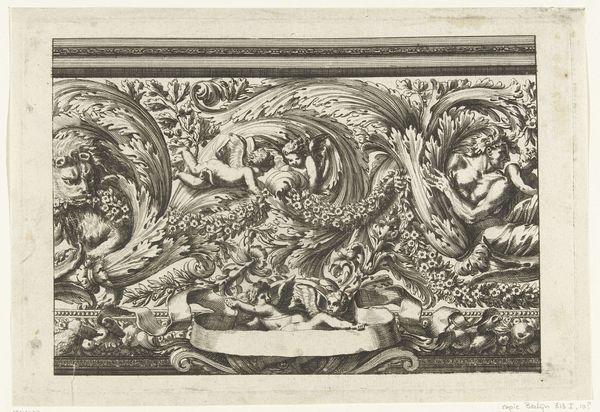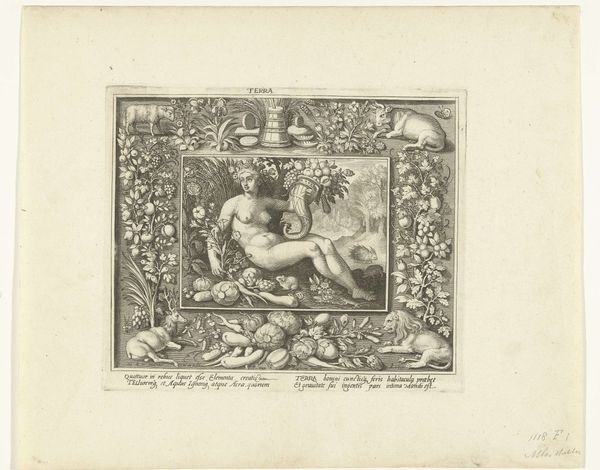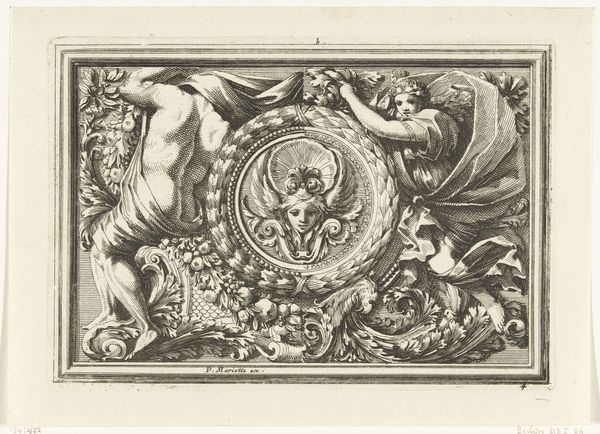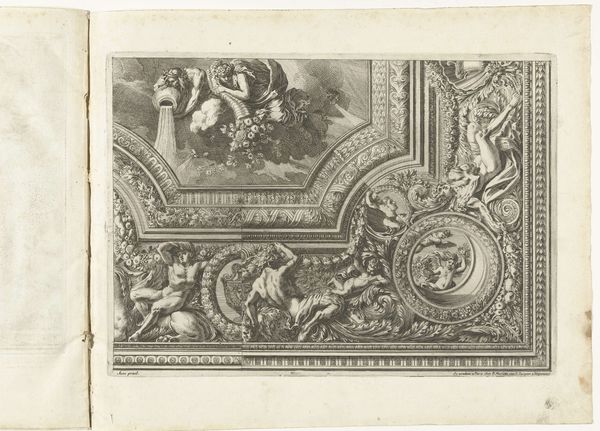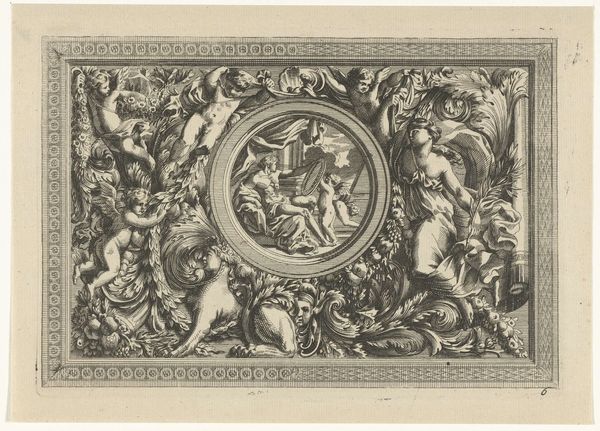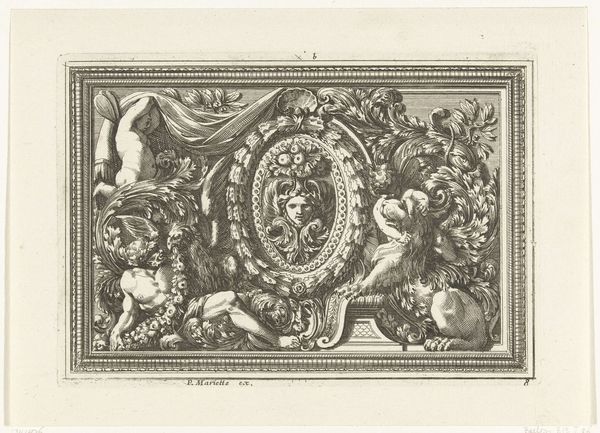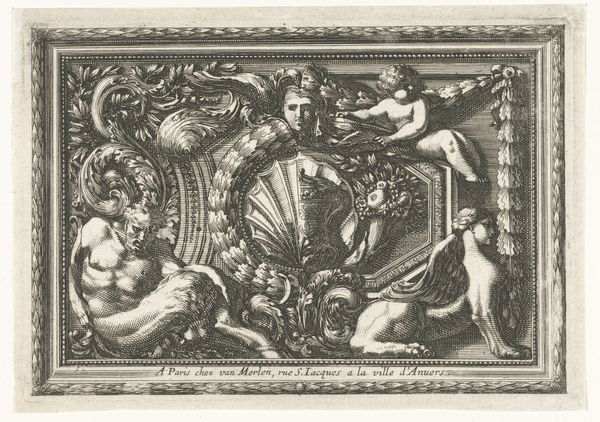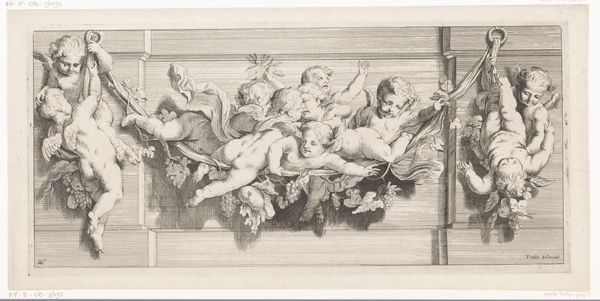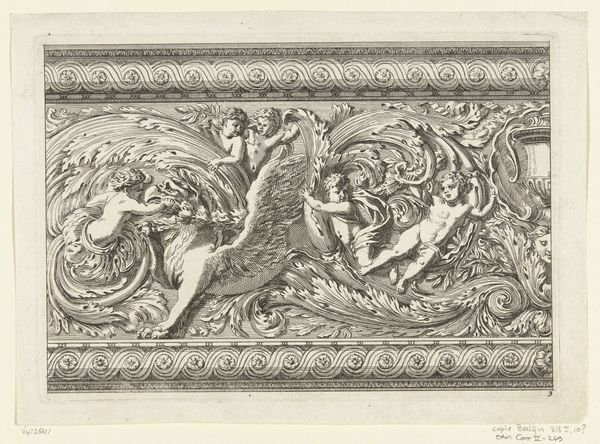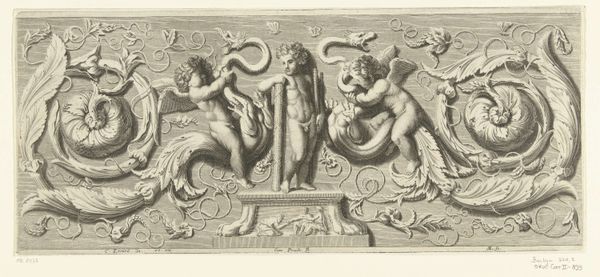
engraving
#
baroque
#
pen drawing
#
pen illustration
#
pen sketch
#
old engraving style
#
figuration
#
history-painting
#
nude
#
engraving
Dimensions: height 135 mm, width 195 mm
Copyright: Rijks Museum: Open Domain
Curator: This is "Paneel met naakte man en vrouw en zittende man," or "Panel with nude man and woman and seated man" by Jean Lepautre, created in 1667. It's an engraving held here at the Rijksmuseum. Editor: My first thought? Baroque extravagance. There’s a clear dynamism and ornamentation—almost overwhelming at first glance. It feels rich, detailed, and certainly theatrical. Curator: Lepautre was known for these intricate designs. What we see is a complex interaction between figuration and decoration, between the subjects depicted and the very process of creating such a decorative piece. Engraving, as a printmaking technique, facilitated the widespread distribution of these designs, acting as models for other artisans and influencing interior design and decorative arts throughout Europe. Editor: Absolutely. The subject matter is steeped in history painting—we see the classical nudes, perhaps referencing mythology. Yet I’m struck by the contrast between the male and female forms here. There's a very constructed, perhaps even idealized, depiction of masculinity and femininity. How do these nudes function within their historical context, particularly regarding the male gaze? Curator: A pertinent question. Consider this was a functional object. It dictated forms of making elsewhere. By looking at the labour behind this, we also think of the socioeconomic relations, and class divisions involved in the creation and consumption of such a luxury. The pen illustration style, the etching—all the handiwork would require trained, specialized craftsmen. Editor: Yes, we cannot dismiss the clear labor involved in crafting such elaborate decoration. There are narratives of production we see and can imagine: a workshop, artists, engravers, the distribution and consumption… Were women also at play, producing these designs? Curator: Gender undoubtedly played a role in the workshop system, restricting opportunities. Though not commonly credited, some women artisans were absolutely involved, sometimes under family trade arrangements. Editor: It's imperative to consider these dynamics when we see such seemingly straightforward images of power and aesthetic enjoyment. Recognizing the embedded labor opens a new lens. Curator: And understanding that opens our understanding beyond a beautiful picture to the conditions that enabled its very creation. Editor: Precisely. Thinking about who held the tools, who controlled production, transforms our interaction with an aesthetic piece like this engraving.
Comments
No comments
Be the first to comment and join the conversation on the ultimate creative platform.
